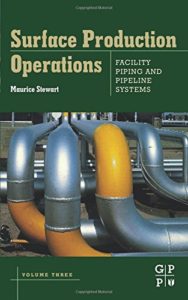Facility Piping and Pipeline Systems
Facility Piping and Pipeline Systems
Facility Piping and Pipeline Systems, Volume III is a hands-on manual for applying mechanical and physical principles to all phases of facility piping and pipeline system design, construction, and operation. For over twenty years this now classic series has taken the guesswork out of the design, selection, specification, installation, operation, testing, and trouble-shooting of surface production equipment.
The third volume presents readers with a “hands-on” manual for applying mechanical and physical principles to all phases of facility piping and pipeline system design, construction, and operation. Packed with charts, tables, and diagrams, this authoritative book provides practicing engineer and senior field personnel with a quick but rigorous exposition of piping and pipeline theory, fundamentals, and application.
You can also Read Industrial Piping and Equipment Estimating Manual
Content
- Preface
![Facility Piping and Pipeline Systems]()
- Acknowledgments
- Overview of facility piping and pipeline systems
- Piping standards, codes, and recommended practices
- Material requirements: Piping materials
- Piping system components
- Engineering drawings: data sheets and symbols
- Fluid flow and pressure drop
- Choosing a line size and wall thickness
- Relief, vent and flare disposal systems
- Piping system design: Layout, supports, and piping vessels and equipment
- Pipe expansion and flexibility
- Pipeline systems
- Pressure testing and nondestructive examination
- Pipeline pigging
- Pipeline operations
- Appendixes
- Index
Included is expert advice for determining phase states and their impact on the operating conditions of facility piping ; determining pressure drop and wall thickness; and optimizing line size for gas, liquid, and two-phase lines. Also included are a guide to applying international design codes and standards, and guidance on how to select the appropriate ANSI/API pressure-temperature ratings for pipe flanges, valves, and fittings.
Covers new and existing piping systems including concepts for expansion, supports, manifolds, pigging, and insulation requirements Presents design principles for a pipeline pigging system Teaches how to detect, monitor, and control pipeline corrosion Reviews onshore and offshore safety and environmental practices Discusses how to evaluate mechanical integrity


Comments are closed.